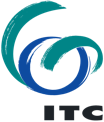This course provides you with the latest knowledge and technologies in photogrammetry and 3d mapping, enabling you to extract and produce accurate 3d topographic data
In this course, through a combination of theoretical concepts and hands-on practice, you will master the skills to process geospatial data from various sensors, including UAVs, laser scanners, and airborne imagery, to extract topographic data.
As the demand for precise and accurate geospatial data grows, professionals rely on high and medium-resolution multispectral imagery and data structures like 3D point clouds. These multispectral images are captured by various airborne sensors, including cutting-edge platforms like UAVs. 3D point clouds are generated using advanced technologies such as laser scanning. These technologies and data types are essential for applications in infrastructure monitoring, environmental analysis, urban planning, disaster management, agricultural monitoring, and natural resource management. In these fields, accurate topographic data plays a key role in informed decision-making, helping to improve sustainability, optimize land use, and mitigate risks.
The course is structured into two sequential modules, each lasting three weeks. The first module focuses on Earth observation sensors and digital airborne image orientation, while the second delves into 3D data extraction and processing techniques. By the end of the course, you will be proficient in using both automated and semi-automated workflows to generate accurate 3D topographic data, equipped with the expertise to apply advanced 3D mapping techniques to real-world projects.
For whom is the course relevant?
- Staff from government agencies and private companies with practical professional experience in photogrammetry or remote sensing and are seeking to stay updated with state-of-the-art technologies for extraing topographic information.
- GIS specialists and researchers from various fields are interested in the acquisition and accuracy of spatial data for practical applications.
- Staff and researchers from various disciplines are looking to integrate geospatial data and technologies into their work or research, such as environmental scientists using topographic data for ecosystem modeling or urban planners applying 3D mapping for infrastructure monitoring.
What is the course content?
The course is structured in two sequential modules of three weeks each. Learning outcomes are defined per module and evaluated progressively at the end of each one.
What will be achieved?
Upon completion of the 2 photogrammetry modules, you will be able to:
- Describe the UAV properties and classifications and distinguish the two main mapping applications
- Describe the sensor system properties, output data quality and applications for EO sensors with a focus on laser scanner and mobile mapping systems
- Explain 3D point cloud properties and data quality generated by a laser scanner, and apply basic processing methods on the 3D point clouds dataset for mapping applications
- Differentiate the quality of the positional control and define appropriate required positional accuracies for various applications
- Design flight planning for a specific application
- Understand image orientation procedures (direct and indirect) with a focus on digital aerial images.
- Apply image orientation procedures, point cloud and orthophoto generation procedures, and feature extraction procedures on drone images using the designated software.
- Process aerial oblique images (image orientation, point cloud, orthophoto generation) using the designated software
- Process the multispectral drone images using the designated software.
- Assess the quality of all the procedures mentioned above and the produced data.
About your diploma
Upon successful completion of this course, you will receive a Certificate which will include the name of the course.
Along with your Certificate you will receive a Course Record providing the name, and if applicable, all the subjects studied as part of the course. It states: the course code, subject, exam date, location and the mark awarded.
Admission requirements
Academic level and background
Applicants for this certificate course should have completed their secondary education in a discipline related to the course specialisation and have at least three years of relevant practical experience. A background in geospatial data, remote sensing, or related fields is essential.
Documentation
The faculty accepts transcripts, degrees and diplomas in the following languages: Dutch, English, and German. It is at the discretion of the faculty to require additional English translations of all documents in other languages as well.
English language
As all courses are given in English, proficiency in the English language is a prerequisite.
If you are a national of one of the countries in this list (PDF), you are exempted from an English language test.
If an English language test cannot be provided, ITC staff members will assess your proficiency to ensure it meets the minimum requirements.
Please note: the requirements when applying for fellowships may vary according to the regulations of the fellowship provider.
English language tests: minimum requirements
Only internationally recognized test results are accepted.
TOEFL Paper-based Test (PBT) | 500 |
TOEFL Internet-based Test | 61 |
British Council / IELTS | 5.5 |
Cambridge | C2 Proficiency / C1 Advanced |
Computer skills
If you lack computer experience we strongly advise you to follow basic courses in your home country.

